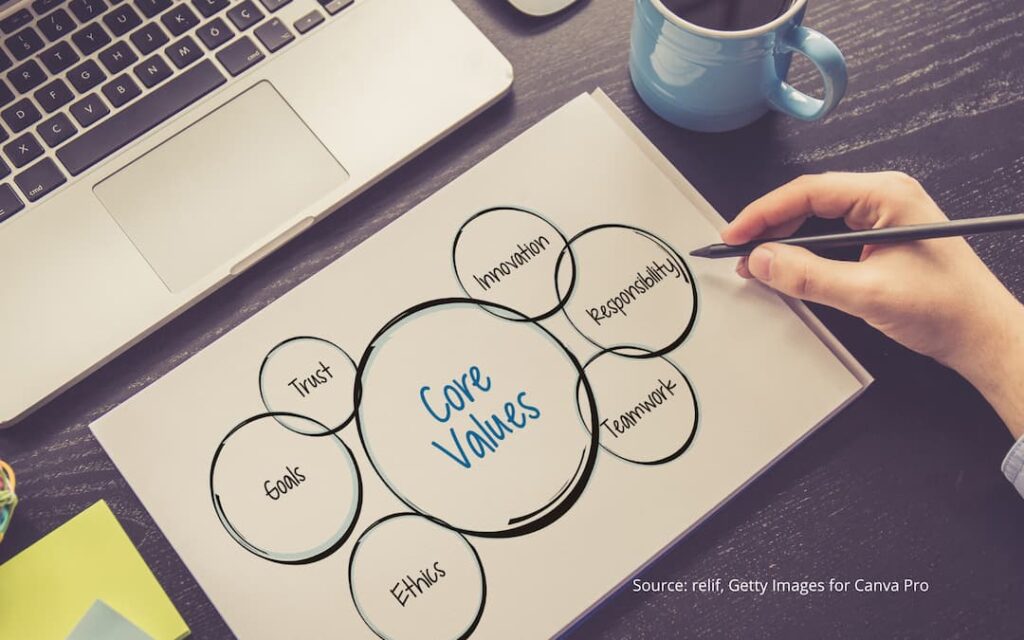In today’s competitive environment, companies cannot afford a disgruntled workforce. But, what qualities make an organization great for its employees? Competitive compensation helps, of course, but it turns out people also want a healthy, inclusive culture where they can build strong relationships and be successful at their jobs. Yet, this isn’t something you can create overnight. To build and maintain a great organizational culture, you must intentionally develop and implement cultural transformation strategies.
At a very high level, organizational culture consists of the beliefs and behaviors that drive how things get done at your company. When employees can connect with these beliefs and behaviors and adopt them as their own, they develop a sense of affinity with your organization. If, however, they find themselves at odds with your cultural norms there is a risk that they will fail to fit in and succeed. Culture transformation strategies aim to mitigate this risk.
What is Cultural Transformation?
Cultural transformation is an ongoing process where you build an awareness of your organization’s core values, identify situations where you are or are not in alignment with those values, and develop actionable plans to communicate and encourage the adoption of any necessary change.
Some people think cultural transformation requires radical organizational change, but that’s not true. Instead, you can make incremental adjustments to support your company’s mission and its ability to achieve long-term success. And, in some cases, a successful cultural transformation process is about recognizing the culture that already exists and building processes that allow that culture to thrive.

When is Cultural Transformation Necessary?
Your culture is dynamic and continuously evolving due to changes in your business strategy, leadership team, or the introduction of new organizational structures. The process of shifting these elements brings people together in new ways. This results in the formation of new norms and beliefs that become a part of your company culture. So, instead of waiting until they experience problems to undergo a culture transformation, world-class organizations embrace transformation as a regular part of their strategy.
A well-designed culture transformation strategy is especially important for global organizations with distributed offices or any organization with diverse teams. When implemented properly, the transformation helps organizations identify and impart a shared sense of purpose and value that translates across geographic and cultural boundaries to encourage desired behaviors.
What are the Benefits of Cultural Transformation?

To gain senior leadership support, you must help them understand the benefits of embracing cultural transformation as part of the yearly planning process. Here are a few potential outcomes you might share:
- Reduced Risk – When done periodically, cultural transformation becomes an iterative process versus a large-scale overhaul. This makes it easier to identify and address issues before they have a chance to fester and pose a risk to the organization.
- Efficiency Gains and Improved Customer Service – A well-managed transformation process facilitates communication throughout the organization. Individuals and teams begin to understand, articulate, and adopt the organization’s purpose and model it to each other, your clients, and stakeholders. This leads to more efficient internal processes, improved customer service, and supports efforts to grow and scale.
- A Heightened Ability to Innovate and Compete – When organizations foster an environment that encourages inclusive behavior and welcomes diverse thoughts and opinions everyone wins. This helps to create a culture of innovation where employees feel safe proposing new ideas and taking risks.
- Increased Productivity and Revenue at a Lower Cost – Culturally aligned organizations have the potential to accomplish more together. They gain a unified sense of purpose and passion that leads to higher levels of satisfaction, employee engagement, and retention. Such an environment can increase productivity and revenue, while reducing costs.
Of course, if you are making a business case for how cultural transformation will help your organization, you must tailor your recommendations. I would encourage you to customize and expand upon this list so you can make a compelling argument.
How to Build and Implement a Culture Transformation Strategy

Culture is at the heart of an organization and your ability to succeed depends on cultural alignment. But what does a culture transformation strategy look like?
Most strategies follow a traditional framework in that you outline your goals, objectives, strategies, and tactics (GOST) in writing and invite feedback. This approach is sensible because it helps you to think things through from a high level first. You specify what your organization is trying to do and how cultural transformation will help you get there before diving into the strategies and tactics that will make your vision a reality.
Once you’ve captured your plans in writing, share them with others so they can absorb your ideas and decide how they feel about them. This will lead to a more productive dialog.
As you might imagine, however, crafting a strategic plan is a lot of work so it is in your best interest to gather input early in the process. To that end, here is a simple framework that can help you build a strategy that others will accept:
Listen Carefully to All Stakeholder Voices
Organizations, and the greater system in which they operate, are social systems. Gather ongoing feedback from individuals within your organization and from key stakeholders from outside your organization. This will help you incorporate the needs of the greater ecosystem and paint a clear picture of the gaps that exist in your organization’s culture.
Leadership support for the cultural transformation process is essential. People look to their leaders and peers when they’re trying to decide whether a change is positive. If they sense lackluster support for the change, they are more likely to resist it. When your plan represents all voices in the ecosystem you will have a more successful transformation process.
Envision Together
Innovation happens when different perspectives come together in support of a shared vision. When you invite people to become involved and to help form the vision together they become more open to the transformation process.
Build a Communication Strategy into Your Plans
Communication is one of the most important steps in the cultural transformation process. Using multiple communication channels to reach the whole community will help you gain buy-in, but a successful implementation also requires action.
Enlist supporters at all levels of your organization who are willing to serve as cultural ambassadors. These team members can help spread the word, model desirable behaviors, and gather feedback so you can continue to iterate.
Establish Realistic Expectations About Timing

It’s important to understand that cultural transformation is a process and that impactful, meaningful, and sustainable change doesn’t happen quickly. As awareness-building and alignment become a regular part of the planning cycle it will get easier. But, it can be helpful to share what your leaders can expect within certain timeframes.
Construct a System for Measuring Success
When establishing goals and objectives it’s best to keep them specific, measurable, attainable, relevant, and time-based, aka SMART goals. This is a useful approach for creating strategic plans because it helps you be realistic and gain alignment about the desired results.
When you establish SMART goals you are effectively telling stakeholders exactly what they can expect and when. And, it allows you to think through the mechanisms you will use to show your progress.
The Bottom Line
Cultural transformation isn’t a destination. It’s an iterative process that opens the lines of communication among your team members so you can develop a unified view of your core values and develop a plan for gaining alignment. To learn more about how this process works, please visit our organizational solutions page.





